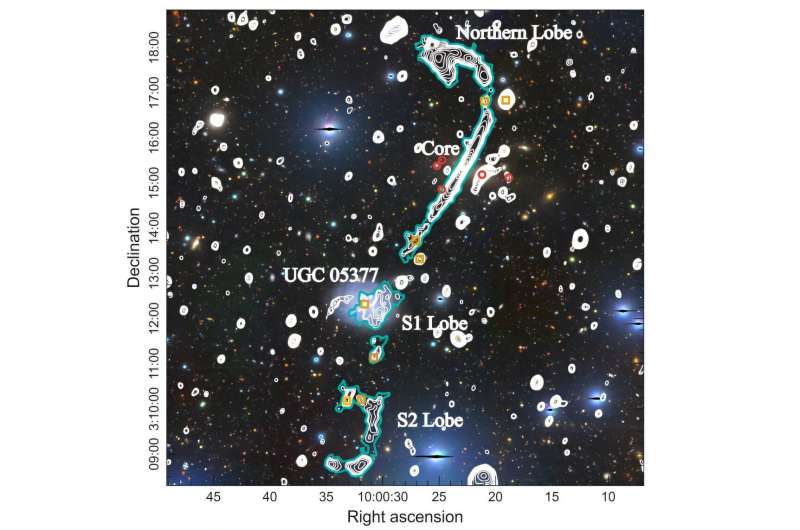Ortolan Bunting

- 08 Oct 2025
In News:
A rare European migratory bird, the Ortolan Bunting (Emberizahortulana), was recently spotted in Baruipur, on the southern outskirts of Kolkata, West Bengal. This marks only the second recorded sighting of the species in the state, with the last being in the Sundarbans in 2014.
About Ortolan Bunting:
- Scientific Name:Emberizahortulana
- Type: Small Palearctic migratory songbird
- Distribution: Native to Europe and parts of Central Asia, extending east to Mongolia and north to the Arctic Circle.
- Migration: The species typically migrates to sub-Saharan Africa during the winter months.
Habitat and Characteristics:
- Preferred Habitat: Open or semi-open agricultural lands, slopes, and grasslands with scattered shrubs; generally avoids dense forests and oceanic climates.
- Altitude Range: Found up to 2,500 metres in suitable habitats.
- Physical Features:
- Length: 16–17 cm; Wingspan: about 25 cm.
- Males have a greenish-grey head, yellow throat, and brown-streaked body.
- Females and juveniles are smaller and duller, with spotted underparts.
- Possess a conical beak suited for cracking seeds.
Conservation Status:
- IUCN Red List: Least Concern
Despite its status, the Ortolan Bunting faces population decline in parts of Europe due to habitat loss and illegal hunting — particularly in France, where it was once considered a delicacy.
Significance of the Sighting:
- Highlights the importance of citizen-led biodiversity monitoring through platforms like eBird and BirdForum.
- Suggests potential changes in migratory routes, possibly influenced by climatic shifts.
- Reinforces West Bengal’s ecological diversity, which continues to attract rare and migratory bird species.
PM-SETU Scheme
- 08 Oct 2025
In News:
- Prime Minister Narendra Modi launched a series of youth-focused initiatives worth over ?62,000 crore, aimed at empowering India’s young population through education, skill development, and entrepreneurship.
- The announcements were made during the Kaushal DeekshantSamaroh held at Vigyan Bhawan, New Delhi, marking a significant step toward building a future-ready workforce aligned with global skill demands.
Pradhan Mantri Skilling and Employability Transformation through Upgraded ITIs (PM–SETU)
The centrepiece of the event was the launch of the PM–SETU scheme — a centrally sponsored initiative with an investment of ?60,000 crore. The scheme seeks to revitalize Industrial Training Institutes (ITIs) across India, transforming them into modern, industry-linked centers of skill excellence.
Key Features of PM–SETU
- Coverage: Transformation of 1,000 Government ITIs into modern, technology-driven institutes.
- Implementation Model:
- Based on a Hub-and-Spoke structure, comprising 200 hub ITIs connected to 800 spoke ITIs.
- Hub ITIs will host innovation centers, incubation units, production facilities, and training-of-trainers setups.
- Spoke ITIs will extend outreach, ensuring skill accessibility to smaller towns and semi-urban regions.
- Curriculum and Industry Linkage:
- Introduction of new demand-driven courses and modernization of existing ones in collaboration with industry partners.
- Establishment of Special Purpose Vehicles (SPVs) with anchor industries to ensure cluster-based training and employability outcomes.
- Academic Integration: Creation of pathways for short-term training, executive programs, and long-term diploma courses to align with higher education and employment opportunities.
- Centres of Excellence: Strengthening of five National Skill Training Institutes—
- Bhubaneswar (Odisha)
- Chennai (Tamil Nadu)
- Hyderabad (Telangana)
- Kanpur (Uttar Pradesh)
- Ludhiana (Punjab)
These will serve as global-level Centres of Excellence through partnerships with leading international institutions.
- Global Collaboration: The initiative is co-financed by the World Bank and the Asian Development Bank (ADB), with the first phase focusing on Patna and Darbhanga ITIs in Bihar.
Other Youth-Focused Announcements
- Vocational Skill Labs: Inauguration of 1,200 vocational skill labs across 400 Jawahar Navodaya Vidyalayas (JNVs) and 200 Eklavya Model Residential Schools spread across 34 States and Union Territories, to integrate skill education at the school level.
- Bihar’s Revamped MukhyamantriNishchay Swayam Sahayata Bhatta Yojana:
- Under the revamped scheme, five lakh graduate youth in Bihar will receive a monthly allowance of ?1,000 for two years, along with free skill training.
- The scheme aims to enhance youth employability and entrepreneurship readiness.
- Karpoori Thakur Skill University: A Skill University named after Bharat RatnaKarpoori Thakur will be established to honor his contribution to social empowerment and education.
- Recognition of Excellence: The Prime Minister also felicitated 46 All India Toppers from Industrial Training Institutes (ITIs) under the Ministry of Skill Development and Entrepreneurship (MSDE).
MeerKAT Radio Telescope

- 08 Oct 2025
In News:
An international team of astronomers has recently used South Africa’s MeerKAT Radio Telescope to identify a new giant radio galaxy (GRG) within the COSMOS field, as part of the MeerKAT International GHz Tiered Extragalactic Exploration (MIGHTEE) survey. The discovery, published on November 11, offers valuable insights into the formation and evolution of radio galaxies and the large-scale structure of the universe.
About the MeerKAT Radio Telescope
- Location: Situated in the Northern Cape province of South Africa, MeerKAT is a world-class radio interferometer operated by the South African Radio Astronomy Observatory (SARAO).
- Origin: Initially conceptualized as the Karoo Array Telescope (KAT) with 20 dishes, its scope was later expanded to 64 dishes, leading to its renaming as “MeerKAT” (meaning “more of KAT”).
- Specifications: Each dish measures 13.5 meters in diameter, spread across a maximum distance of 8 km.
- Technology: Signals received by individual dishes are transmitted to a central processor, allowing them to function collectively as a single, high-resolution telescope.
- Purpose:MeerKAT is a precursor instrument for the Square Kilometre Array (SKA) — the world’s largest and most sensitive radio telescope project, aimed at exploring the origin and evolution of the universe.
- Significance: Currently, MeerKAT is among the most powerful radio interferometers operating at centimetre wavelengths, enabling detailed observations of distant cosmic structures.
About Radio Galaxies
A radio galaxy is a type of galaxy that emits intense radio waves extending far beyond its visible boundaries. These emissions typically arise from jets and lobes of plasma produced by the galaxy’s active galactic nucleus (AGN), which is powered by a supermassive black hole.
The interaction of these jets with surrounding matter generates synchrotron radiation, making such galaxies prominent sources of radio emissions in the cosmos.
The Discovery: MGTC J100022.85+031520.4
Using MeerKAT’s advanced capabilities, astronomers identified a new giant radio galaxy (designated MGTC J100022.85+031520.4) within the COSMOS field.
Key Characteristics:
- Host Galaxy: Elliptical galaxy SDSS J100022.85+031520
- Redshift: Approximately 0.1034
- Size: About 4.2 million light years in projected length — qualifying it as a Giant Radio Galaxy (GRG)
- Mass: Nearly 93 trillion solar masses
- Radio Power:597 ZW/Hz at 1,284 MHz
- Age: Estimated 1 billion years
- Jet Power: Around 1 million QW
- Location: Identified as the Brightest Cluster Galaxy (BCG) within the galaxy cluster WHL J100022.9+031521
This makes it one of the few (around 4%) known GRGs that exist within a cluster environment rather than in isolated regions.
Baratang Island
- 08 Oct 2025
In News:
India’s only mud volcano, located at Baratang Island in the Andaman and Nicobar Islands, has erupted again after more than two decades.
About Baratang Island
- Location:Baratang Island lies in the North and Middle Andaman district, approximately 150 km from Port Blair.
- Geological Uniqueness: It is home to India’s only known mud volcanoes, making it a prominent site for geological study and eco-tourism.
- Tribal Presence: The region is also inhabited by the Jarawa tribe, one of the indigenous groups of the Andaman and Nicobar Islands.
- Previous Activity: The last major eruption occurred in 2005, which was attributed to seismic activity and oceanic tectonic movements in the region.
What are Mud Volcanoes?
- Definition: Mud volcanoes, also known as “mud domes,” are geological structures formed by the eruption of mud slurries, gases, and water rather than molten rock.
- Formation Process:
- They occur when gases (mainly methane, with traces of carbon dioxide or nitrogen), generated from the decay of organic matter deep underground, force a mixture of mud and water to the surface.
- This process creates cone-shaped mounds or domes resembling typical volcanoes, but without lava.
- Characteristics:
- Their temperature is much lower than that of igneous volcanoes.
- They can range from a few meters to several hundred meters in height and up to 10 km in width.
- Some mud volcanoes also exist underwater, influencing seabed topography and occasionally forming new landforms or islands.
Comparison with Barren Island Volcano
- Barren Island, another volcanic site in the Andaman region, witnessed minor eruptions in September 2025—on the 13th and 20th.
- It is located about 140 km northeast of Port Blair and is India’s only active volcanic island, lying at the junction of the Indian and Burmese tectonic plates.
- Historical records show eruptions at Barren Island in 1787, 1991, 2005, 2017, and 2022.
- Officials have clarified that the Baratang mud volcano and the Barren Island volcano are distinct geological entities—the former being sedimentary and gas-driven, while the latter is igneous and magma-driven.
Significance and Precautions
- The Baratang eruption underscores the geological dynamism of the Andaman and Nicobar region, which lies in a seismically active zone due to the subduction of the Indian Plate beneath the Burmese Plate.
- Tourism and Safety: The site is a popular tourist attraction, but safety protocols have been enforced to prevent accidents.
- Scientific Importance: Such eruptions provide valuable insights into subsurface gas activity, tectonic movement, and geothermal processes in the region.
Stable Coins
- 08 Oct 2025
In News:
The Union Finance Minister recently emphasized that countries must be prepared to engage with stablecoins, noting that rapid innovations in the cryptocurrency space are reshaping the global monetary order.
What are Stablecoins?
- Stablecoins are a category of cryptocurrencies designed to maintain a steady value by being linked to a reference asset—most often a fiat currency like the U.S. dollar, though they may also be tied to commodities or a basket of currencies.
- Unlike volatile digital assets such as Bitcoin or Ethereum, stablecoins are meant to minimize price fluctuations, making them more practical for payments, remittances, and everyday transactions within blockchain-based systems.
Types of Stablecoins
1. Fully-Backed (Collateralized) Stablecoins
- Definition: These stablecoins are backed one-to-one by tangible, high-quality assets held in reserve—typically cash, government securities, or other liquid instruments.
- Mechanism: For every coin issued, there is an equivalent amount of the pegged asset held in custody. This ensures that users can redeem their tokens for fiat currency at a fixed rate, maintaining stability and user trust.
2. Algorithmic Stablecoins
- Definition: These coins are not supported by actual reserves but rely on pre-programmed algorithms to keep their value stable.
- Mechanism:
- When the coin’s price rises above its target value, the algorithm issues more tokens to increase supply.
- When the price falls below the peg, the system removes tokens from circulation to reduce supply.
This self-adjusting mechanism helps maintain price equilibrium without physical collateral.
Key Features and Advantages
- Price Stability: Designed to minimize volatility, stablecoins are suitable for trade, payments, and as a safe asset within the crypto ecosystem.
- Transaction Efficiency: They enable instant and low-cost transfers, particularly across borders, reducing reliance on traditional intermediaries.
- Programmability: Being digital and blockchain-based, stablecoins can be easily integrated into smart contracts and decentralized finance (DeFi) systems, automating financial operations.
- Digital Representation of Fiat: They serve as a blockchain version of national currencies, facilitating real-time settlements and bridging traditional and digital finance.
